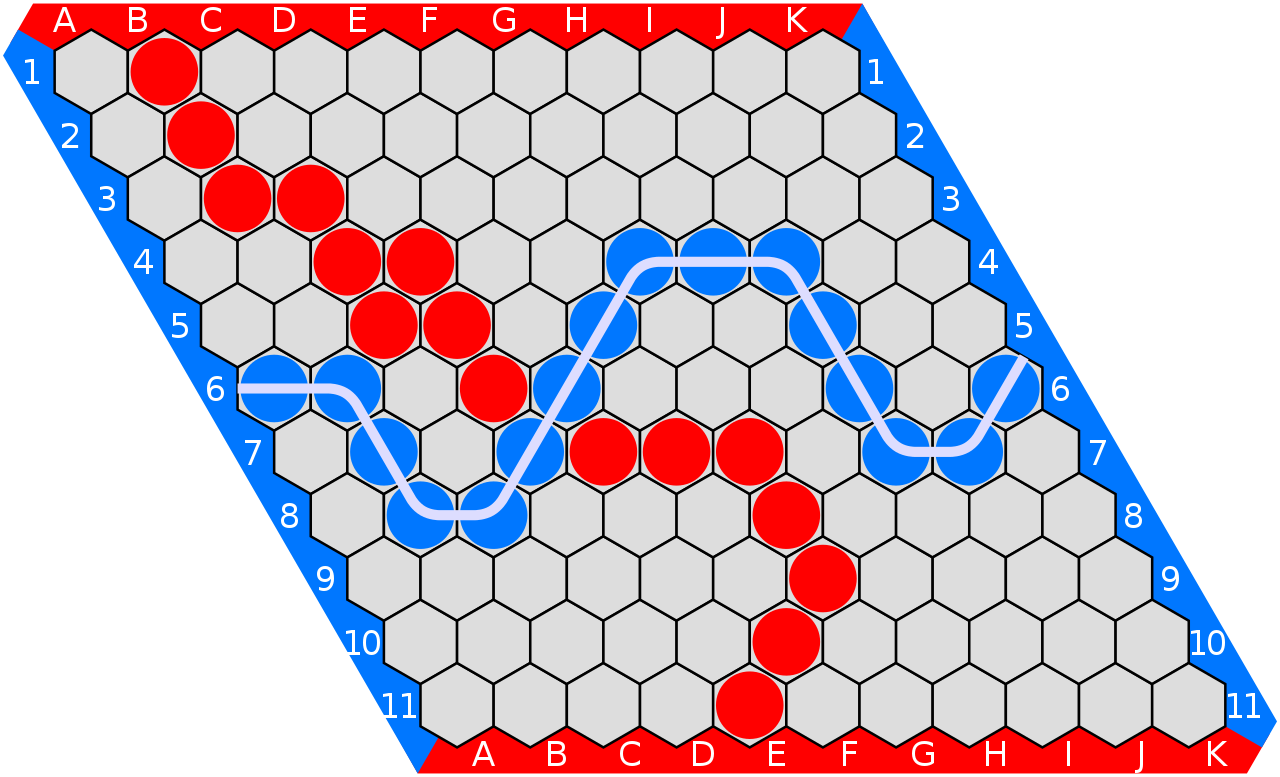Hexagons: Bridges Between History, Mathematics, and Modernity
Key Takeaways:
- Hexagons symbolize unity and balance, echoing through ancient cultures and contemporary applications.
- The mathematical elegance of hexagons contributes to their versatility in tessellation and grid-based systems.
- Modern architecture embraces hexagonal patterns for both aesthetic appeal and structural efficiency.
- Hexagons play a crucial role in technology, from computer science grids to innovative materials like graphene.
- The enduring impact of hexagons spans historical symbolism, mathematical exploration, and future-driven innovation.
I. Introduction
Hexagons, the six-sided wonders, have etched an indelible mark across history, mathematics, and contemporary innovation. From ancient civilizations to cutting-edge technologies, this article embarks on a journey through time, unraveling the enigmatic allure of hexagonal patterns. In exploring their historical symbolism, mathematical elegance, and diverse applications, we uncover a rich tapestry woven with threads of creativity, symmetry, and enduring significance.
II. Unveiling the Enigmatic Hexagon Pattern
In the vast realm of design and aesthetics, the hexagon pattern stands out as a captivating and versatile element. From ancient artistry to modern architecture, this six-sided polygon has woven itself into the fabric of human creativity. In this exploration, we delve into the intriguing world of hexagons, unraveling their historical significance, mathematical elegance, and contemporary applications.
A Prelude to Symmetry
To comprehend the allure of hexagons, one must first appreciate the inherent symmetry they embody. Unlike squares or rectangles, hexagons boast a unique balance between complexity and simplicity. The regularity of their six equal sides and angles creates a mesmerizing visual harmony that has intrigued mathematicians, artists, and designers throughout the ages.
Hexagonal patterns have left an indelible mark on diverse cultures, finding expression in ancient mosaics, Islamic art, and even honeycombs crafted by nature itself. This omnipresence underscores the timeless appeal of hexagons, serving as a testament to their enduring significance across various disciplines.
The Mathematical Marvel
Beyond its aesthetic appeal, the hexagon holds a special place in the realm of mathematics. The symmetrical perfection of the hexagon is not arbitrary but is deeply rooted in its geometric properties. The sum of internal angles in a hexagon equals 720 degrees, making it a polygon of mathematical elegance.
The hexagon’s unique relationship with circles further enhances its mathematical allure. Inscribing and circumscribing circles within a hexagon creates a mesmerizing interplay of shapes, unlocking a world of mathematical wonders that has fascinated scholars for centuries.
As we embark on this exploration of hexagons, we will unravel the tapestry of mathematical beauty that underlies their captivating form. Join us in the next section as we trace the historical footsteps of hexagons, discovering their significance in ancient cultures and the intriguing stories they tell through the sands of time.
III. Hexagons Through the Sands of Time
Hexagons, with their six sides and interconnected angles, have etched their presence across millennia, leaving an indelible mark on ancient civilizations. From the tessellated wonders of Ancient Greece to the intricate patterns of Islamic art, hexagons have resonated with cultural significance and symbolic depth.
Hexagons in Ancient Greece
In the cradle of Western civilization, the hexagon found a home in the architectural and mathematical pursuits of Ancient Greece. The regular hexagon was a fundamental shape in the tessellations of famed mathematician and philosopher Pythagoras. The Greeks, recognizing the hexagon’s geometric perfection, integrated it into their art, design, and understanding of symmetry.
The honeycomb, a natural formation of hexagons in beehives, also captivated ancient Greek minds. The hexagonal structure’s efficiency and balance observed in nature inspired admiration and contemplation, contributing to the mystique surrounding hexagons in Greek culture.
Islamic Geometric Patterns
Moving eastward, the hexagon continued its journey through time, finding its way into the intricate geometric patterns of Islamic art and architecture. The Alhambra in Spain and the Great Mosque of Cordoba are renowned for their hexagonal tessellations, showcasing the seamless integration of mathematical precision with aesthetic beauty.
Islamic artists, inspired by the hexagon’s symbolism and mathematical elegance, adorned palaces and mosques with mesmerizing patterns. The repetition of hexagons in Islamic art not only reflected a pursuit of geometric perfection but also conveyed deeper spiritual meanings embedded in the culture.
Hexagons in Asian Cultures
Hexagons also made their mark in Asian cultures, contributing to the rich tapestry of symbolism and design. In Chinese culture, the hexagram, a six-pointed star formed by the overlapping of two equilateral triangles, held profound significance in Daoist and Confucian philosophy. The I Ching, an ancient Chinese divination text, employed hexagrams as symbols representing fundamental aspects of the natural world and human experience.
In Japan, hexagonal motifs known as “kikkou” symbolized tortoise shells and were used in traditional art, representing longevity and protection. The hexagon’s presence in Asian cultures further underscores its universal appeal and enduring relevance.
Hexagonal Foundations in Nature
While human civilizations were busy incorporating hexagons into their cultural expressions, nature was weaving its own hexagonal wonders. The honeycomb, crafted by bees with remarkable precision, exemplifies nature’s efficient use of hexagonal geometry. The hexagonal cells in a honeycomb maximize space and structural integrity, showcasing a perfect blend of form and function.
As we traverse the sands of time, we see the hexagon emerge not only as a geometric marvel but also as a symbol deeply embedded in the human psyche. Join us in the next section as we shift our focus to the mathematical underpinnings of hexagons, unlocking the secrets of their symmetrical
IV. The Symmetry and Mathematics of Hexagons
The Geometry of Symmetry
Hexagons, with their precisely balanced six sides and angles, epitomize symmetry in geometry. Symmetry, a fundamental concept in mathematics, refers to the balanced arrangement of elements on either side of a central point or axis. The hexagon’s inherent symmetry is not only aesthetically pleasing but also holds profound mathematical implications.
In a regular hexagon, each side is equal in length, and each internal angle measures 120 degrees. This uniformity contributes to the hexagon’s symmetrical beauty. The six-fold rotational symmetry of a hexagon means that it can be rotated by multiples of 60 degrees, aligning perfectly with its original orientation. This geometric property opens the door to a myriad of design possibilities, making hexagons a favorite among mathematicians and designers alike.
Hexagons and Tessellation
Hexagons play a pivotal role in tessellation, the art of creating repetitive patterns with no gaps or overlaps. This mathematical concept, explored by renowned artist M.C. Escher, relies heavily on the hexagon’s ability to tessellate seamlessly. When arranged together, hexagons create a captivating honeycomb pattern, showcasing nature’s influence on both art and mathematics.
The hexagon’s tessellation prowess extends beyond simple patterns; it forms the foundation of complex structures in fields such as crystallography. Crystals, with their ordered and repeating molecular structures, often exhibit hexagonal symmetry. Understanding hexagonal tessellation has been crucial in unlocking the mysteries of crystal formations and advancing materials science.
Hexagons in Circles
Hexagons share a fascinating relationship with circles, adding another layer of mathematical intrigue. By inscribing and circumscribing circles within a hexagon, mathematicians uncover captivating ratios and geometric relationships. The radius of the inscribed circle is equal to half the length of a side, while the radius of the circumscribed circle is equal to the distance from the center to a vertex.
This interplay between hexagons and circles not only showcases the interconnectedness of geometric shapes but also highlights the precision and elegance inherent in mathematical relationships. As we delve deeper into the mathematical foundations of hexagons, we invite you to explore their applications in modern science and design in the upcoming sections.
Join us in the next installment as we bridge the historical and mathematical aspects, transitioning to the contemporary applications of hexagonal patterns in various fields, from architecture to technology.
V. Contemporary Applications of Hexagonal Patterns
Hexagons in Modern Architecture
Structural Brilliance
In the realm of modern architecture, hexagonal patterns have emerged as a symbol of innovation and structural brilliance. Architects and designers, drawing inspiration from both nature and mathematics, incorporate hexagons into buildings to achieve both aesthetic appeal and functional efficiency.
The hexagon’s ability to tessellate seamlessly allows architects to create visually stunning facades that captivate the eye. The London Aquatics Centre, designed for the 2012 Olympic Games, features a striking hexagonal pattern that not only adds to its architectural beauty but also serves a functional purpose in distributing loads and enhancing structural stability.
Hexagonal tiles and panels, mirroring the honeycomb’s efficiency, have become popular choices for cladding and roofing systems. The hexagon’s versatility allows architects to experiment with patterns, creating facades that play with light and shadow, offering a dynamic and visually engaging experience.
Urban Planning and Design
In urban planning, hexagonal grids have gained prominence for their efficiency in distributing space and facilitating connectivity. Hexagonal city planning, often referred to as honeycomb city layouts, maximizes land use while minimizing travel distances. This approach promotes sustainability and efficient resource utilization, contributing to the creation of vibrant and interconnected urban spaces.
Hexagonal paving patterns in public spaces offer a modern and visually appealing alternative to traditional square or rectangular designs. From pedestrian walkways to public squares, hexagonal patterns infuse a sense of order and sophistication into urban landscapes.
Hexagons in Technology and Innovation
Hexagonal Grids in Computer Science
Hexagons have found their way into the realm of computer science, playing a crucial role in the development of hexagonal grids. Unlike traditional square grids, hexagonal grids offer advantages in certain applications, such as map design and game development. The efficiency of hexagonal grids in representing spatial relationships has made them popular in fields ranging from computer graphics to artificial intelligence.
In board games and video games, hexagonal grids provide a more natural representation of movement and distance, allowing for smoother gameplay experiences. This geometric shift in the gaming world demonstrates how the hexagon’s mathematical elegance translates into practical applications.
Hexagons in Materials Science
Materials scientists leverage the hexagon’s inherent symmetry and tessellation properties to design advanced materials with unique properties. Hexagonal structures are prevalent in materials like graphene, a single layer of carbon atoms arranged in a hexagonal lattice. Graphene’s remarkable strength, flexibility, and conductivity have positioned it as a groundbreaking material with applications in electronics, energy storage, and even medical devices.
The hexagon’s role in materials science extends beyond graphene to other nanostructured materials and self-assembling systems. Researchers draw inspiration from the efficient packing of hexagons in natural structures, aiming to replicate and enhance these properties in engineered materials.
Hexagons in Art and Design
Visual Harmony and Creative Expression
In the world of art and design, hexagonal patterns continue to captivate creators seeking visual harmony and creative expression. Graphic designers, interior decorators, and fashion designers incorporate hexagons to add a touch of sophistication and modernity to their creations.
Hexagonal tiles and patterns are popular choices in interior design, offering a contemporary aesthetic that transcends trends. From hexagonal backsplashes in kitchens to intricate hexagon-inspired wall art, the versatility of hexagons allows for a seamless integration of design elements in various spaces.
As we navigate through the contemporary applications of hexagonal patterns, the journey from historical symbolism and mathematical elegance to modern architecture, technology, and design becomes evident. Join us in the final section, where we conclude our exploration of hexagons and reflect on their enduring impact across diverse domains.
VI. Hexagons – A Timeless Tapestry
A Crossroads of History, Mathematics, and Innovation
As we stand at the intersection of history, mathematics, and innovation, the hexagon reveals itself as a timeless tapestry woven into the fabric of human civilization. Its journey from ancient cultures, through the annals of mathematical exploration, and into the forefront of contemporary applications showcases the depth and versatility of this six-sided marvel.
Hexagons as a Symbol of Unity and Balance
Throughout history, hexagons have transcended their geometric nature to become symbols of unity and balance. From ancient Greece to Islamic art, the hexagon’s symmetrical perfection echoed the pursuit of harmony in both the natural and human-made world. Its recurring presence in diverse cultures, each infusing its own symbolism, underscores the universal appeal of this geometric form.
In the modern era, hexagons continue to embody balance and unity, whether in urban planning layouts that optimize space or in the structural elegance of architectural designs. The hexagon’s ability to seamlessly tessellate, creating interconnected patterns, resonates with a contemporary longing for cohesion and interconnectedness.
A Mathematical Marvel Unleashing Innovation
The hexagon’s mathematical properties, from its precise angles to its tessellation capabilities, have unleashed a wave of innovation across various fields. Architects leverage hexagonal patterns to create awe-inspiring structures that blend form and function. Materials scientists harness the hexagon’s symmetry to design groundbreaking materials with unparalleled properties. Computer scientists embrace hexagonal grids for enhanced spatial representation and efficiency in computational tasks.
Innovation, inspired by the hexagon, extends beyond its physical manifestations. The hexagon serves as a metaphor for thinking outside conventional boundaries, encouraging creative exploration and problem-solving. Its mathematical elegance and geometric allure continue to stimulate the minds of scientists, engineers, and artists alike.
Hexagons in the Future Landscape
As we peer into the future, the hexagon stands poised to play an integral role in shaping our ever-evolving landscape. From sustainable urban planning to advancements in materials science and technology, the hexagon’s influence is likely to expand. As architects push the boundaries of design, scientists delve deeper into nanostructures, and technology embraces new paradigms, the hexagon remains a constant source of inspiration.
The honeycomb’s efficiency in nature, the geometric precision in ancient mosaics, and the innovative applications in modern architecture and technology collectively weave a narrative of enduring significance. The hexagon’s journey through time reflects a continual quest for symmetry, unity, and creative exploration.
VII. Conclusion
In this exploration of hexagons, the convergence of history, mathematics, and innovation unfolds, revealing a polygon of timeless fascination. The hexagon’s symmetrical beauty, deeply rooted in ancient cultures, resonates through modern architecture, technology, and design. As we envision the future, the hexagon stands as a symbol of unity and balance, inspiring creativity and driving advancements. From the honeycombs of nature to the intricate tessellations of human creation, hexagons weave a narrative that transcends eras. As we close this chapter, the hexagon remains a testament to the unending pursuit of symmetry and the interconnectedness of diverse fields.


